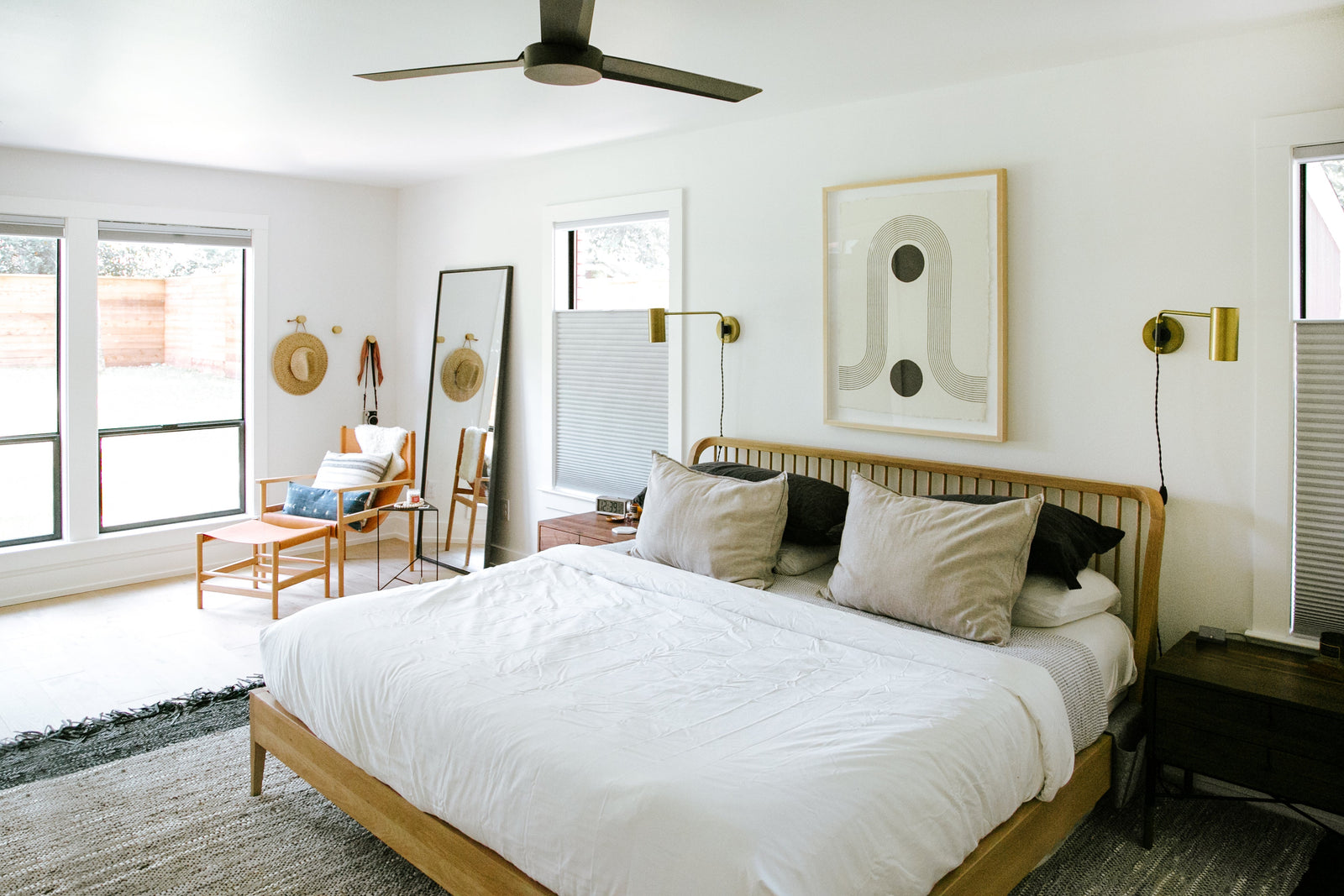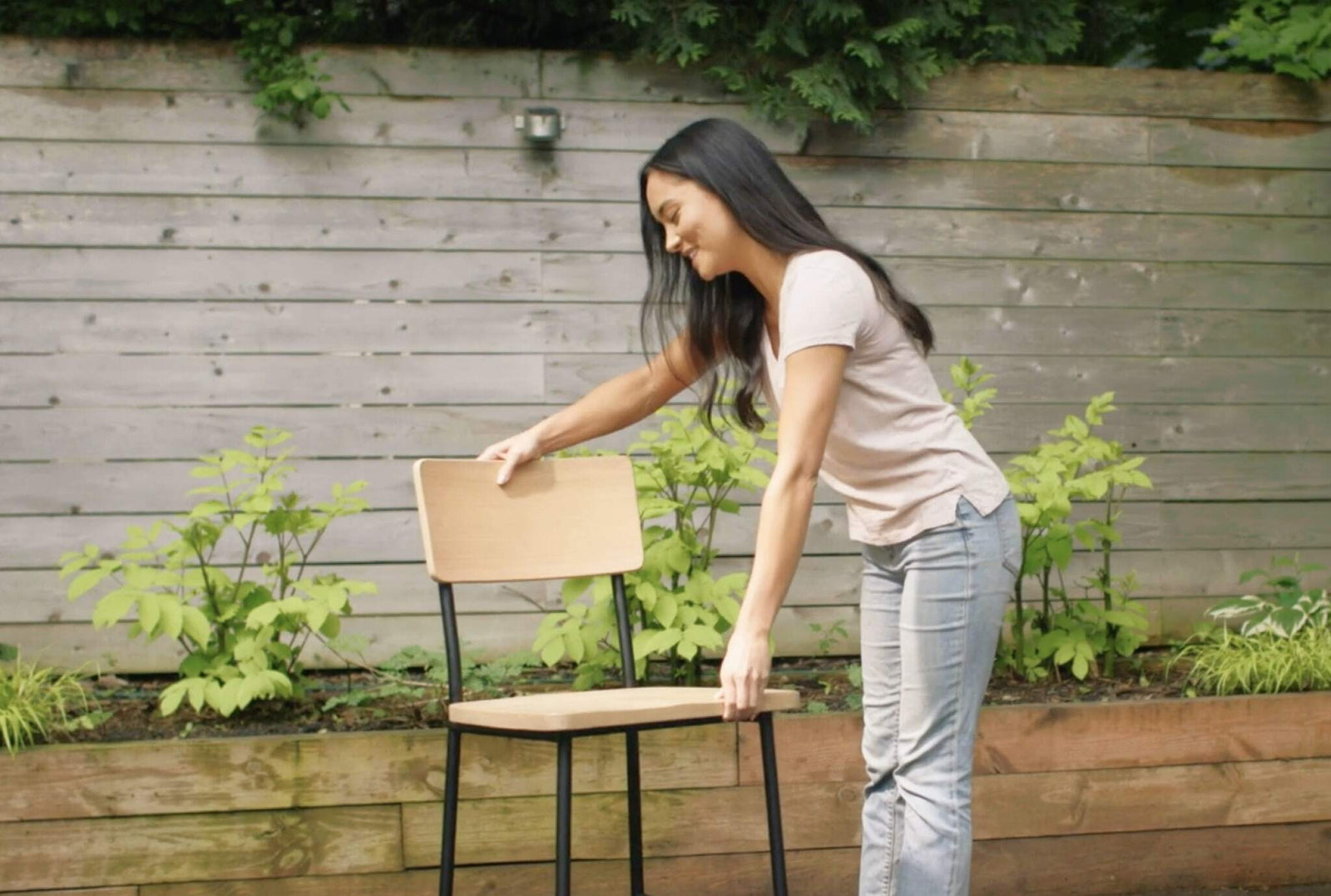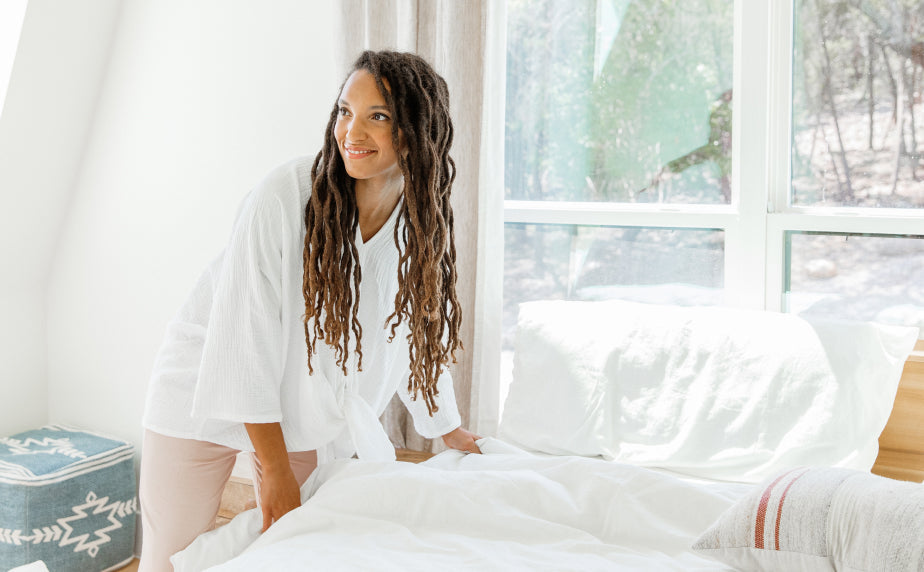How to Choose an Air Purifier For Your Home

While many health experts focus on the importance of nutrition or exercise, we tend to get passionate about some of the more under appreciated aspects of well-being…like clean air.
You may have heard that the average person spends about 90% of their time indoors, and the problem with this—apart from a lack of natural sunlight, lack of exercise, lack of contact with nature, etc.—is studies have proven air quality is often worse indoors than it is outdoors1.
Fortunately, unlike outdoor pollution, indoor air pollution is something we can easily control. And one of the best ways to do this quickly is with a home air purifier.
Today’s article will focus on how to choose an air purifier that suits your needs, lifestyle, and budget.
How Air Purifiers Can Help Your Home & Health
There are very few homes with air so pristine that they wouldn’t benefit from a quality air filtration system.
Indoor air pollutants come from a number of sources including:
- Household cleaning products
- Personal care products
- Pesticides
- Air fresheners and fragrances
- Laundry (especially when using fragranced products)
- Dry cleaning
- New furniture that hasn’t outgassed
- Remodeling
- Paint
- Art projects
- Indoor combustion from cooking (especially on gas), fireplaces, or wood stoves
- Dust
- Mold
- Unclean ventilation systems
- And even bacteria, germs, pesticides, VOCs, etc. tracked in from footwear
At Branch Basics, we always recommend removing products with synthetic chemicals via a Healthy Home Cleanse. To do this, it's essential to be your own product advocate. However, if you want to start breathing cleaner air straight away, then investing in a quality air filter is a great first step.
Related Reading: Best Fragrance Free Cleaning Products
What Should a Good Air Purifier Remove?

Many run-of-the-mill air purifiers disclose limited information about what they actually remove, instead listing general categories like “dust”, “allergens”, and “germs”.
However, to get the biggest bang for your health (and buck) it is essential to know exactly what your air purifier is capable of removing.
Here’s a general list of harmful toxins a quality air purifier should remove:
- Volatile Organic Compounds (VOCs): These are chemical compounds you can smell and may decrease over time to emit no odor. They may or may not be toxic (like the scent of an essential oil). VOCs in indoor air emit from building materials, furnishings, window treatments, fabrics, pesticides, fragranced products, cleaning, laundry, and body care products. They can cause nose and throat irritation, frequent headaches, nausea, cancer, endocrine disruption, neurological damage, damage to the liver, kidney, central nervous system and more3.
- Semi-volatile Organic Compound (SVOCs): Are odorless chemical compounds that ride on dust and increase as they are slowly released and are shed from a host of common products. Sources of SVOCs include: flooring, furnishing, window treatments, cookware, insulations, stain resistant and water resistant clothing, electrical goods, beauty and cleaning products. Researchers have found household dust harbors a cocktail of these toxic chemicals, that have been linked to a range of health hazards, from cancer to adverse effects on reproductive health, fetal and child development and neurologic function4,5.
- PM2.5: These fine particles come from tobacco smoke, cooking, burning candles, fireplaces, wood stoves, and fuel burning space heaters. PM2.5s enter our homes from vehicles, chimney smoke, wildfires, volcanic eruptions, and emissions from factories and chemical plants. They are known to trigger heart attacks or worsen chronic condition such as asthma, diabetes, bronchitis, and other respiratory problems6,7.
- Biological Contaminants: These toxins Include bacteria, viruses, mold, mildew, animal dander, cat saliva, house dust, mites, cockroaches, and pollen. These may exacerbate allergies, immune function, and neurological function8.
- Related read: Home Cleaning Guide for Allergy Sufferers
- Radon: An invisible gas found in indoor air in some parts of the country and is the #1 cause of lung cancer in non-smokers9.
- Asbestos and Lead: This infamous duo is found in house dust particulate matter in older homes. Asbestos is linked to fibrotic lung disease (asbestosis), reduced respiratory function, increased risk of lung cancer, and mesothelioma10. Lead exposure is linked to many symptoms including reduced cognitive ability11.
When shopping for an air purifier, it’s important to note that not all these indoor air pollutants may apply to your home. For example, newer homes tend to not have lead problems but may have greater levels of other indoor pollutants, such as VOCs, found in new building materials. Keep this in mind when choosing the best air purifier for your home.
Related Reading: Is Sodium Hypochlorite (Bleach) Toxic?
What to Consider When Purchasing an Air Purifier
The number of air purifiers out there is enough to make your head spin! Use the following as a fail-proof criteria when selecting your air purifier:
- Materials: Air purifiers should be free of plastic parts, formaldehyde, antimicrobial chemicals, toxic adhesives, and glues.
- Filter: A quality purifier should have a true medical grade HEPA filter and a filter media to remove VOCs. Medical grade HEPA removes 99.97% of particulates at 0.3 microns in diameter. Many companies use “HEPA-type” filters which filter at 95% @ 0.3 microns, so be sure to verify what you’re getting.
- Filter Media: Coconut carbon, bituminous carbon, zeolite blends, potassium iodide (for formaldehyde removal) etc. are the best filter media for removing VOCs. Avoid potassium permanganate. This is a chemical used as a disinfectant, which can also be used as a filter media in air filters touted to remove formaldehyde. Many companies have media test kits for compatibility if sensitive.
-
Ozone: It’s important to verify your filter does not emit ozone. Ozone is a documented lung irritant even at very low levels and is a health hazard according to the American Lung Association.
- Electronic air purifiers create ozone as a byproduct of their operation. Avoid electrostatic air purifiers/photocatalytic oxidizers/electrostatic precipitators.
- Beware of buzzwords like “Activated Oxygen”, “UV light”, and “Corona Discharge”, as these typically mean “ozone production”.
- Ionization: Ionization negatively charges airborne particles causing them to drop to the floor or other surfaces. This happens naturally at the beach, but in this case it means you have to HEPA vacuum all your surfaces to pick up the dropped dust...and who needs the extra work? (Note: don’t confuse ionization with ozone).
- Computerized Air Purifiers: These products emit high frequency fields, a type of electromagnetic field (EMF) that also pollute our homes and are especially important to avoid during sleep. Studies have associated exposure to EMFs with increased incidence of childhood and adult cancers, including leukemia, lymphoma, brain cancer, male breast cancer, increased risk of miscarriage, depression, and suicide.
- Smart Technology: Avoid smart technology air purifiers. Note: You can probably disengage the WiFi if the purifier meets all other standards. The company should be able to walk you through the process.
- Invest Wisely: While some things are worth bargain shopping for, you really do get what you pay for when it comes to an air purifier. Think of it as an investment in your family’s long-term health.
Best Non-Toxic Air Purifiers

When shopping for your air purifier, use the lists above to help you ask the right questions. A reputable manufacturer will be happy and willing to answer you inquiries.
Here are a few of our favorites:
- Austin Air: We’re big fans of all their units! Their “Bedroom Machine”, which was used in clinical trials at John’s Hopkins University for removal of dangerous air pollutants, is ideal for those with severe allergies or chemical sensitivities, requires filter replacement only every 5 years, and comes with a 5-year warranty.
-
Aireox Model 45B: This is a more affordable option and comes with a coconut carbon filter. These are suitable for smaller rooms and cover a service area of 250 square feet, are whisper quiet making them ideal for bedrooms, and requires filter replacement annually.
Note: We do not recommend the Aireox 45 D model because the medium used to filter formaldehyde is potassium permanganate. - Make Your Own: Buy a 20x20 box fan and a 20x20 Filtrete Air Filter. This option is effective and more affordable. Simply turn the fan on, drop the filter on the back of the fan and the suction from the fan will hold the filter without tape or mechanical fasteners.
Where Should I Start Air Filtering?
Your bedroom is the best place to put your new air purifier.
Why start in your bedroom instead of a common area? Two reasons:
#1: Unless you work from home, chances are you spend most of your time at home in bed.
#2: During sleep is when our body naturally rests, repairs, and restores, so you don’t want it burdened by airborne toxins during this time.
To get the most benefit out of your air purifier, run it at night while you sleep then move it to other areas of the house where you are spending time during the day.
To avoid exposure to the motor's magnetic field position the unit at least 3 feet away from your bed or furniture you spend time on.
Summary
Numerous studies have proven indoor air quality is typically worse than outdoor air quality.
While we always advocate removal of indoor air pollutants at their source, an air purifier is a tool you can use right away to start improving your household air immediately and will continue to minimize generated pollutants.
When shopping for an air purifier quality is everything and you get what you pay for.
Look for filters that remove those main indoor air pollutants listed above, filter mechanically, are free from harmful materials, use a healthy filter media, contain true HEPA filters, and do not emit high frequency fields, ozone, or use ionization technology.
To save time, check out our favorite brands from Austin Air and Aireox.
And remember, we can live weeks without food, days without water, but only minutes without air. Thus, it makes common sense to ensure the air you’re breathing is the healthiest it can be.
Using human-safe products can help clean up your air quality. Detoxify your cleaning habits with these Branch Basics products:
- For streak-free windows, try the Glass Cleaning Essentials Kit
- To ease your transition to clean products, use the Trial Kit
- For a cleaning product overhaul, invest in the Premium Starter Kit to toss the toxins
Happy cleaning!
References:
- https://www.epa.gov/indoor-air-quality-iaq/inside-story-guide-indoor-air-quality
- https://www.livescience.com/64409-should-you-take-off-shoes-indoors.html
- https://www.epa.gov/indoor-air-quality-iaq/volatile-organic-compounds-impact-indoor-air-quality#Health_Effects
- https://www.theguardian.com/science/2016/sep/14/toxic-chemicals-household-dust-health-cancer-infertility
- https://www.sciencedirect.com/science/article/pii/S0045653518303734
- https://www.sciencedirect.com/science/article/pii/S0048969717303297
- https://www.sciencedirect.com/science/article/pii/S014765131630029X
- https://www.cpsc.gov/safety-education/safety-guides/home/biological-pollutants-your-home
- https://www.epa.gov/radon/health-risk-radon
- https://www.ccohs.ca/oshanswers/chemicals/asbestos/effects.html
- https://www.epa.gov/lead/protect-your-family-exposures-lead
- https://www.researchgate.net/publication/254153578_Potassium_Permanganate_as_a_Main_Disinfectant
- https://www.lung.org/our-initiatives/healthy-air/outdoor/air-pollution/ozone.html
- https://ehp.niehs.nih.gov/doi/pdf/10.1289/ehp.109-1240626
Categories

Marilee Nelson
Marilee Nelson is an Environmental Toxins expert who has spent nearly 30 years advocating for the chemically-sensitive and chronically-ill. She is a Board Certified Nutritionist, Certified Bau-Biologist and Bau-Biology Inspector and specializes in Food As Medicine. She has helped thousands of families and individuals identify, heal and recover from toxic exposures and is on a mission to revolutionize the way American families view their health.








